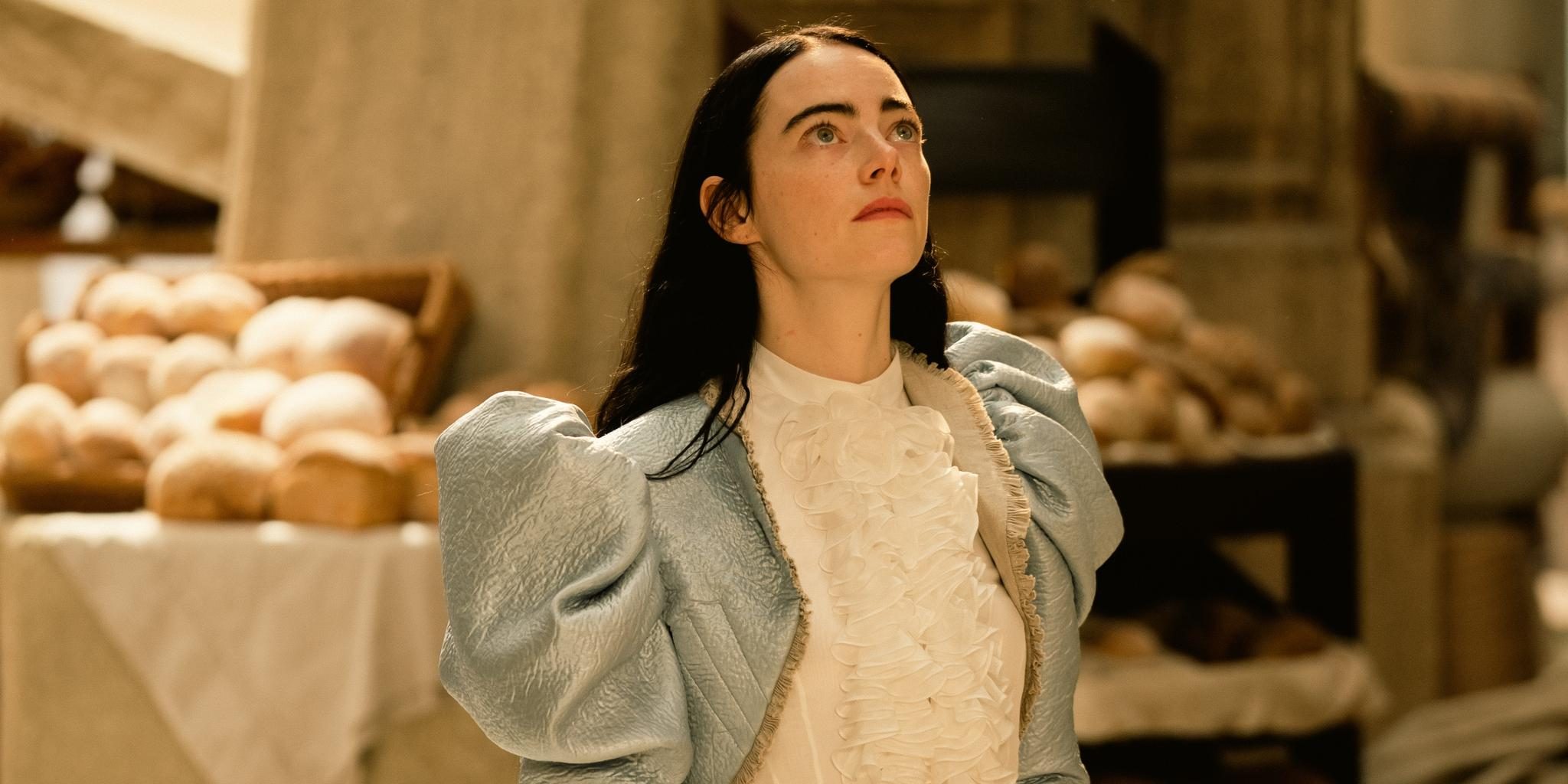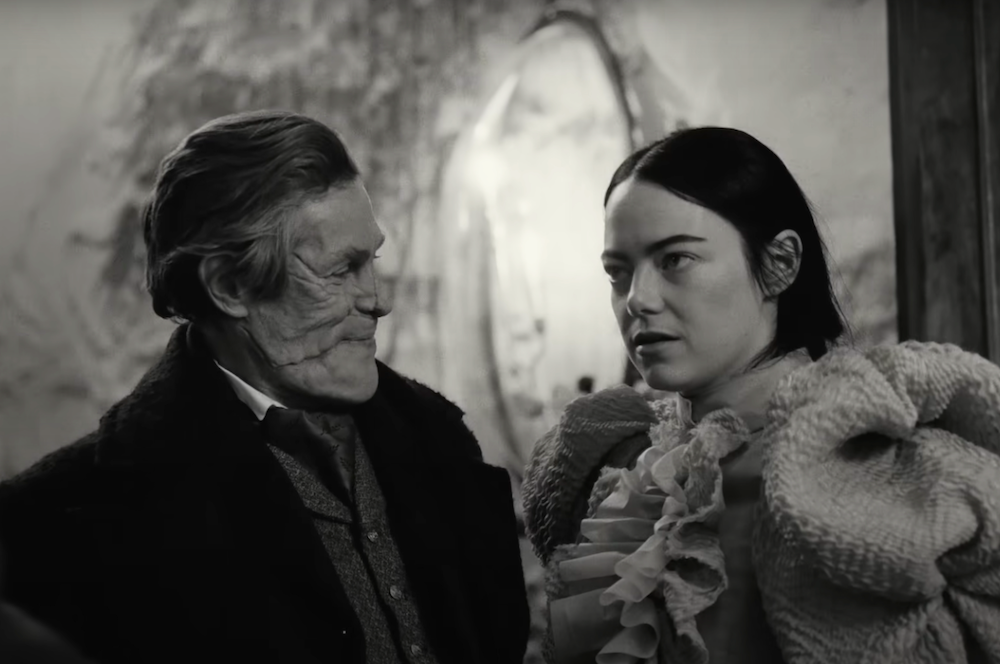In ‘Poor Things,’ Yorgos Lanthimos paints the vivid world of Bella Baxter, who is brought back to life by a scientist who becomes her father figure. The film follows Bella’s perspective, showing the audience the world from a different lens, heavily tinted with Bella’s innocence in the beginning and then morphing according to her experiences. Because the story so heavily depends on Bella’s character growth, the entire world around her has been constructed and presented in a way that best portrays the way she sees things rather than what the audience sees. It is due to this that the creative choice of keeping the first half of the film in black and white was made. SPOILERS AHEAD
The Color Switch Denotes Bella’s Awakening
When Godwin Baxter brought Bella to life, she had a grown-up body but an infant’s brain. Godwin had found a pregnant Victoria on the brink of death, floating in the river. He cut out her child from her womb and put its brain inside Victoria, whom he named Bella, having no knowledge of who she was and where she’d come from. For Bella, Victoria never existed. There were no memories from her past life, no connections whatsoever to the world she’d left behind. When Bella woke up, she was a kid who was seeing everything around her for the first time.

Godwin Baxter became extremely protective of Bella, refusing to let her go outside. He confined her to the walls of his house, which is where she would eat, play, learn, and grow up. Apart from Godwin, the only person she knew was Mrs Prim, the woman who was responsible for the upkeep of the house while also assisting Godwin in his operations. This confinement and being cut off from the outside world made Bella’s life so monotonous that everything around her became dull. Due to this, her growth also felt like it was held back due to many restrictions imposed on her.
While for someone coming into her world, the colors might still be there, for Bella, they were all leeched out by that time. The use of black-and-white, instead of color, allows us to bridge that gap between the audience and the character by showing us the world the way it would have appeared to Bella. Another thing to note here is that Bella is still a child, at least according to her brain, and for infants, recognizing colors or at least attesting differences between them is not yet something they’ve fully developed. In fact, newborns start with seeing the world as black and white and then slowly, over the first few months of life, start to see the colors as being on a wider spectrum. Because Bella is also still in that stage at the beginning of the film, it makes sense for the world around her to be in black-and-white.
Another thing that the use of black-and-white does is give that old-school horror feel to the movie. ‘Poor Things’ has a lot of parallels with ‘Frankenstein,’ and the lack of color in the first quarter of the film allows the audience to be transported to that period and feel the absurdity of the world while also immediately settling into it as the story moves at a quick pace. In the same vein, the title cards throughout the film, each marking a chapter in Bella’s life, are also in black-and-white, suggesting that the new chapter will teach her something that she doesn’t yet know. It’s a clever way to show the audience that despite the growth that she has had so far, she still has a long way to go.

The lack of color at the beginning of the film is also what makes the colors appear all the more vivid when Bella’s awakening actually begins. Once she is out of Godwin’s house and in the world with Duncan, who is not holding her back at all, there is a sudden burst of color in her life, especially in terms of her sexual awakening. At first, everything is bright and yellow and sunny, denoting this newfound happiness that is overloading her senses now, be it in the form of great sex, delicious tarts, or the haunting song she hears while roaming the streets. The colors expand and change around her with her experiences as she moves from Lisbon to Alexandria to Paris and then back to London.
Another thing that must be noted is that when Godwin tells Max about how he found Bella and what he did to her, the entire flashback sequence is in color, while the other part is still black and white. It is because the flashback is a part of Victoria’s life, not Bella’s. Victoria has lived her life having seen and experienced things that have added to her perspective, giving her a full spectrum of experiences. So, when we revert to Bella’s story, who is still figuring things out, the film goes back to being black-and-white.
Read More: Poor Things: What Happened to Godwin Baxter’s Face? Is Godwin Frankenstein’s Monster?


You must be logged in to post a comment.